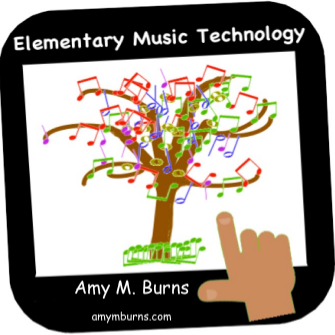Recording Sound Samples
Since I see the students three times in a 10-day cycle, with the third time being a music and movement class this trimester, we had a time constraint. Therefore, when we did our "sound walk", we recorded sound samples from the music classroom as opposed to taking a walk around the campus. We submitted four sound samples that included Orff instruments, drums, and other classroom percussion instruments. Once the sound samples were up on Soundcloud, I downloaded four of our samples, and the ones from New York City, Chaewon, and the Jeju Islands. I placed them in a folder on the desktop and launched Soundtrap (www.soundtrap.com).
Soundtrap
The students used Soundtrap to create their musical global creations. Soundtrap is a cloud-based, online, digital audio workstation that works on computers, Chromebooks, and iPads. With this program, you can create music using loops or by recording sounds. You can also collaborate with other students in your classroom or from around the world. Think of it as GarageBand + Google Docs = Soundtrap. You can create a free account, but I would suggest trying to budget for the education version. In addition, if you have a MusicFirst subscription, Soundtrap is now also being offered by them. We have the education version and my IT was very helpful in creating music email addresses because my second graders do not have access to email. The music email addresses were the ones we used to access our Soundtrap accounts. They were given addresses of SoundTrap 193, etc. My students and I adore using Soundtrap. You can read about how I use it here.
Creating Music
I grouped the students into four groups and they began creating music. I logged them into the music classroom Soundtrap accounts. I showed them how to use Soundtrap, how to audition loops, and how to drag the global sounds into their projects. Together, we learned about mixing by having me ask them questions, such as:
"Can you hear all of the sounds or does one sound dominate?"
"Does a band have two drummers? If not, then can we have two drum beats playing at the same time?"
"Do you only hear high sounds?"
"Do you only hear low sounds?"
"How can we change that?"
I then sent the students with their music creation ideas and they created their global compositions. I guided them by encouraging form in their music. This could look like intro-melody-coda, or a form like AB. We also located where the sounds were on google maps. Using Google Earth, we can show how far away, or how close (in the case of New York City), the locations are to our school. The students were also fascinated by the sounds such as the siren from NYC and the fountains and waves from the Jeju Islands.
Finished Projects
The students finished their projects and presented them to their classmates. When asked about their musical creations, they stated the following:
"I loved the global sounds. They were so cool!"
"We liked how we got to add more sounds so it would sound better. There were places music stopped and we made sure to add more sound to it. One sound alone did not sound as good as two or three."
"I liked all the fades that we added. I liked the big fade as well."





